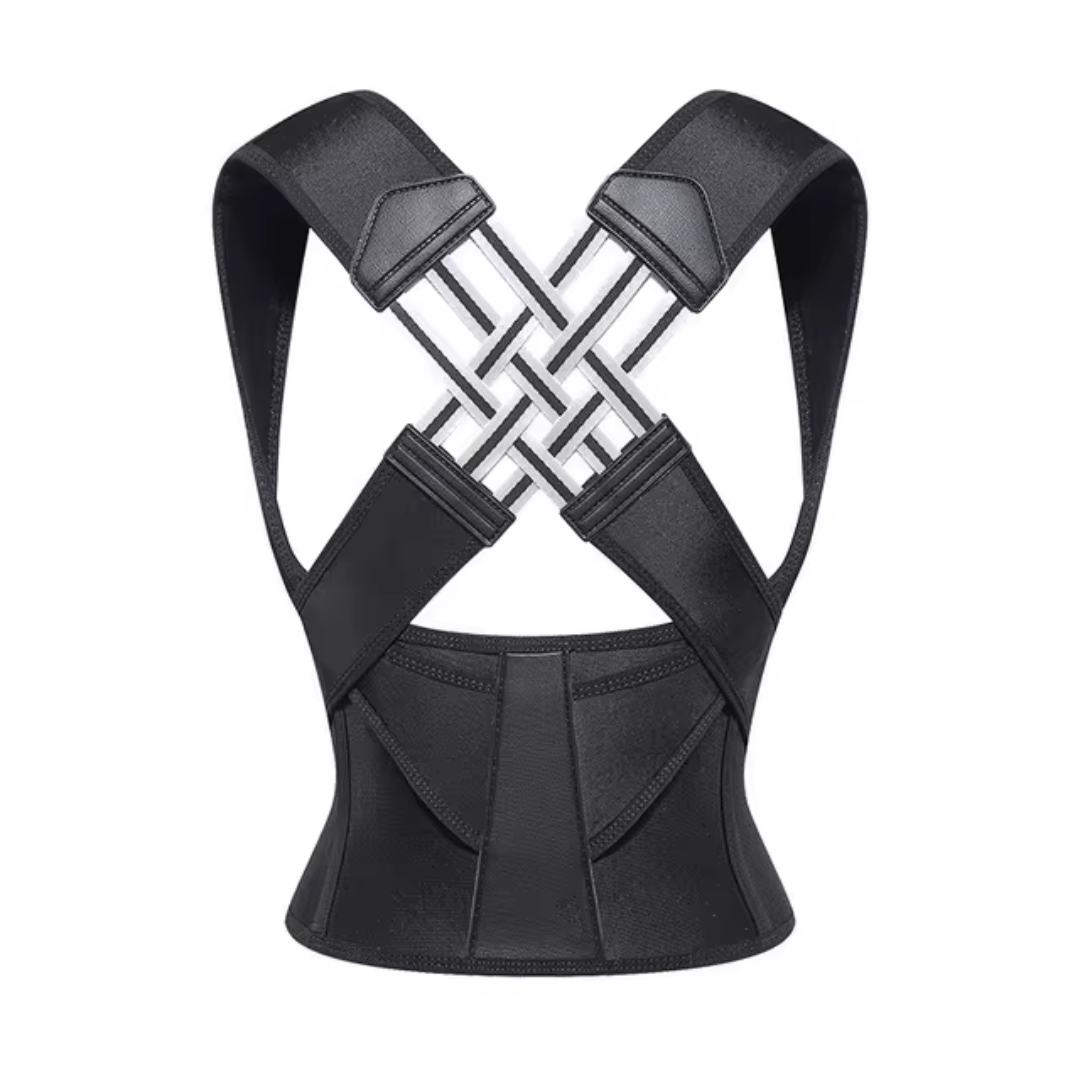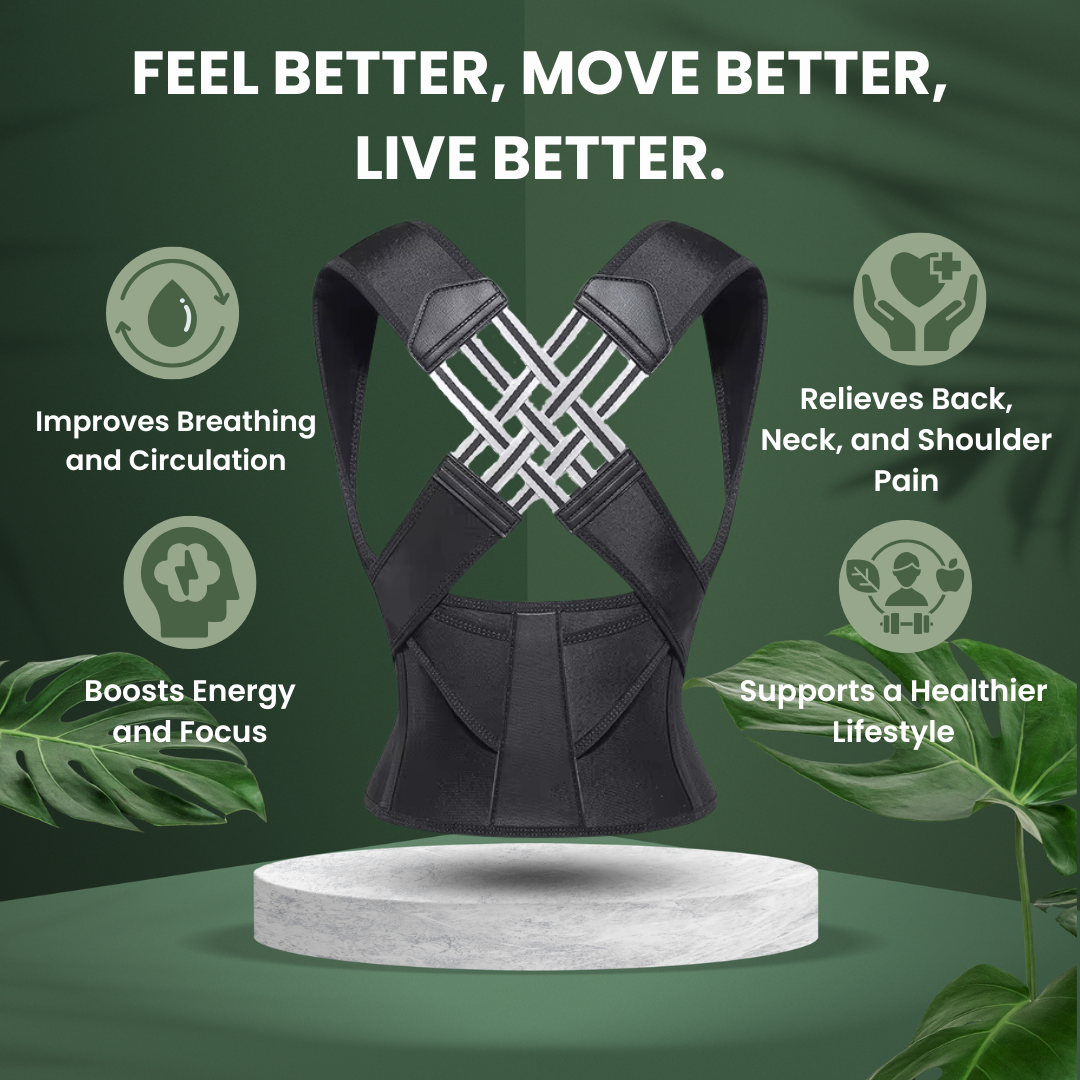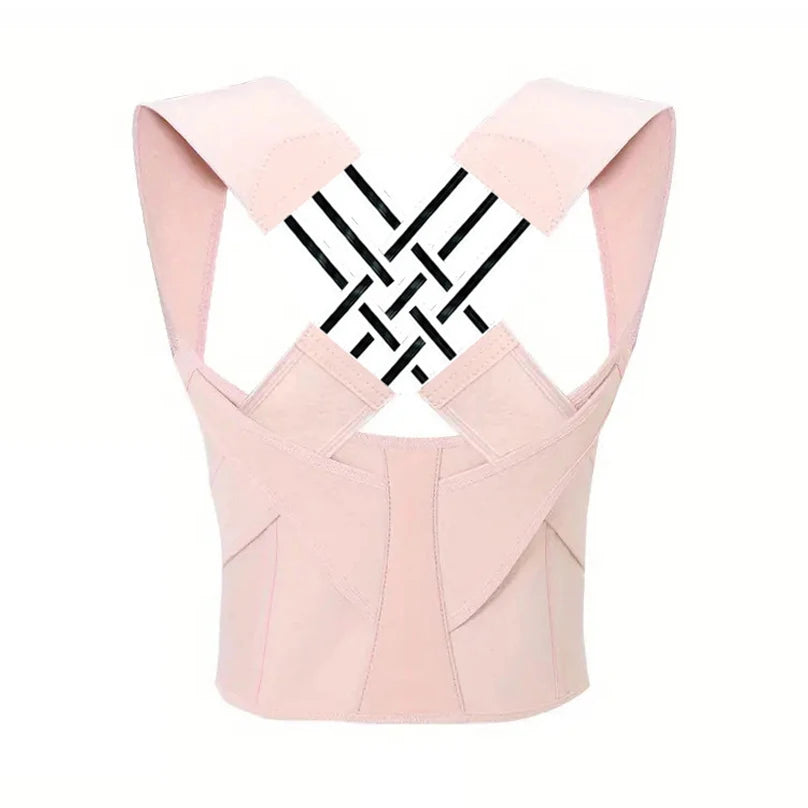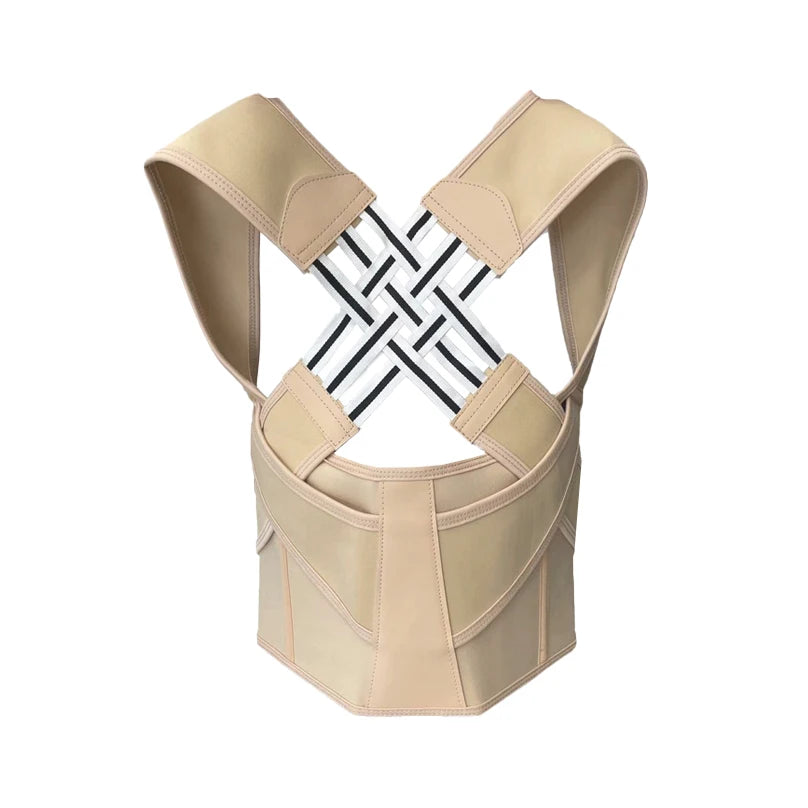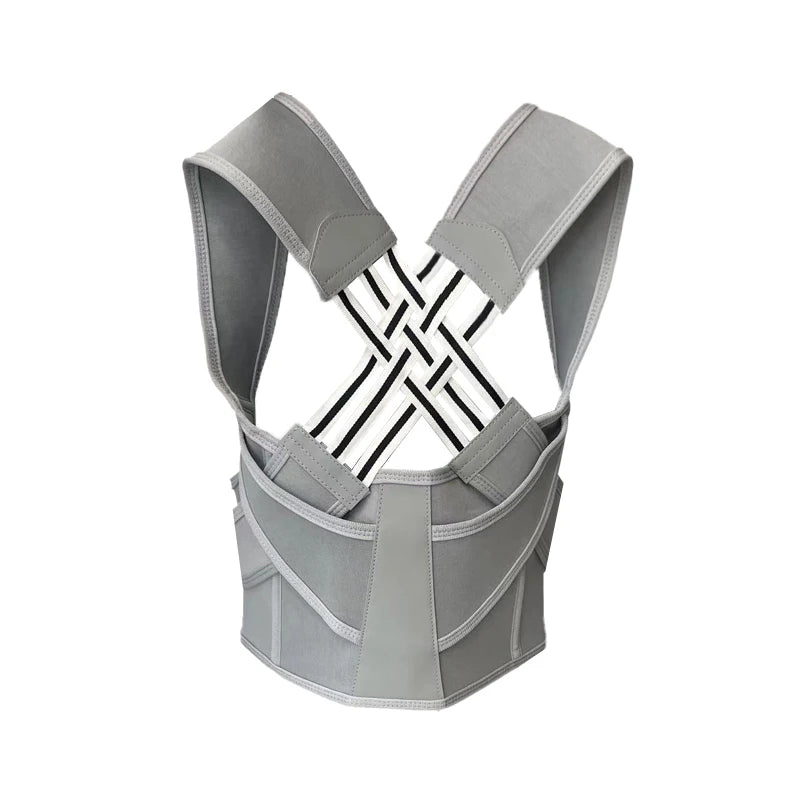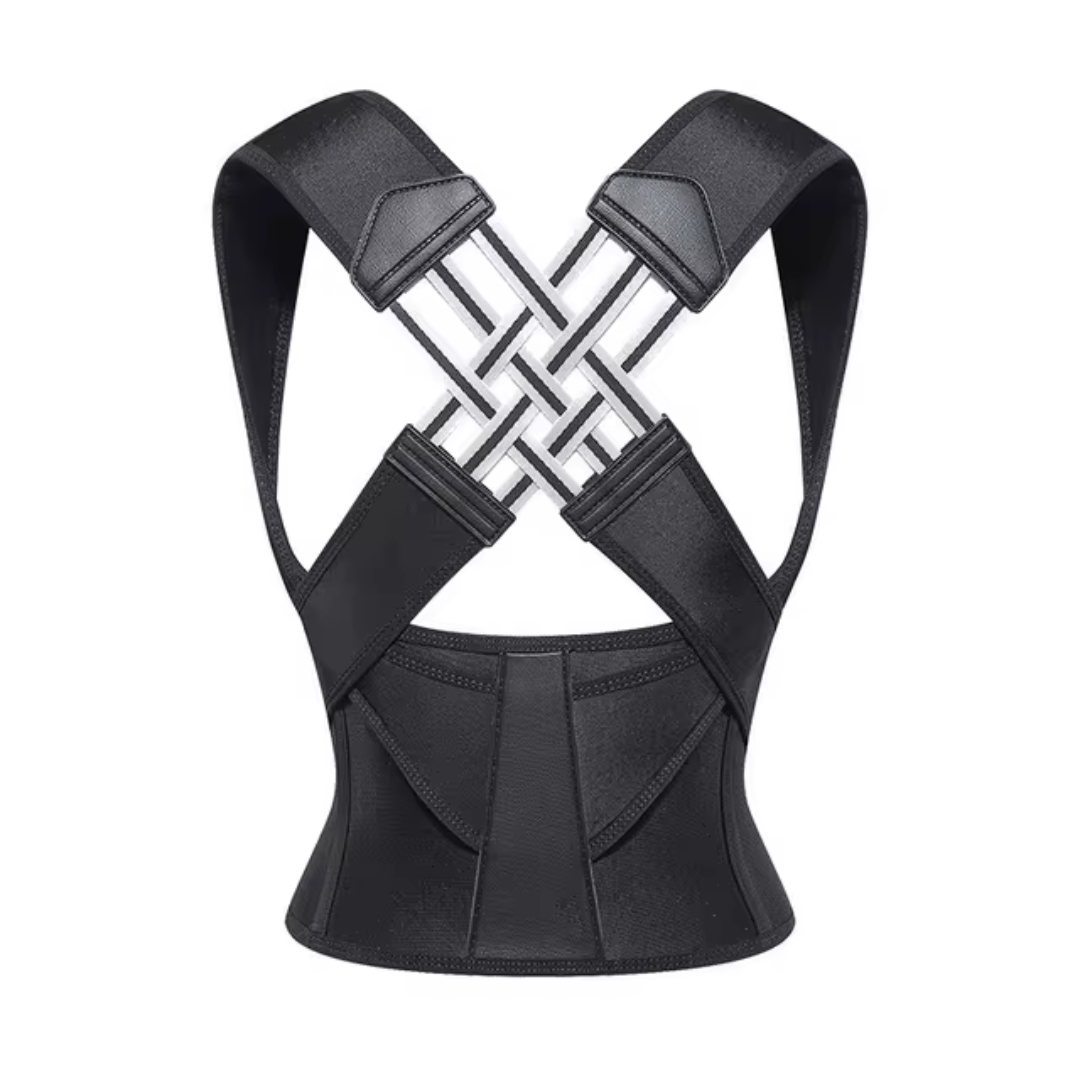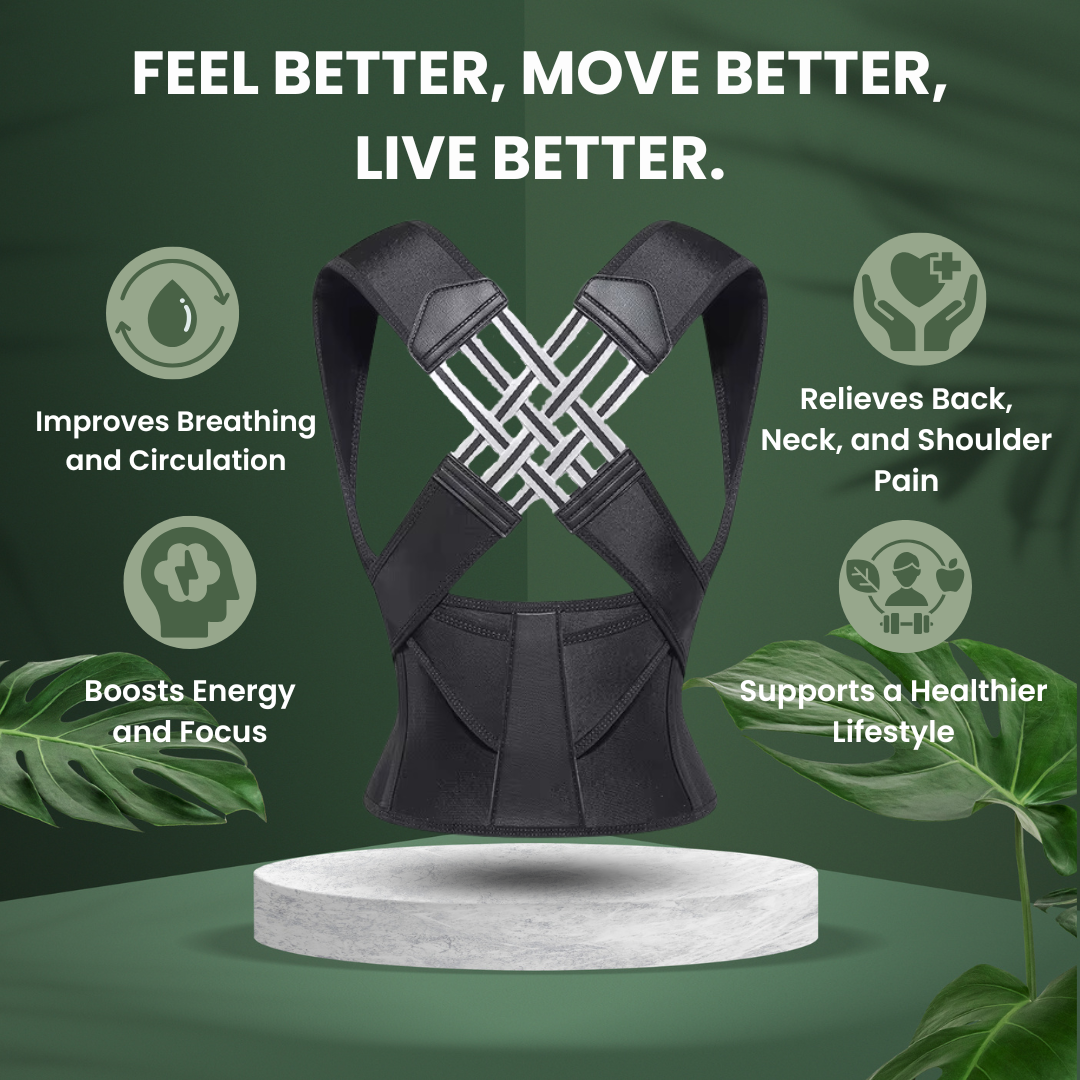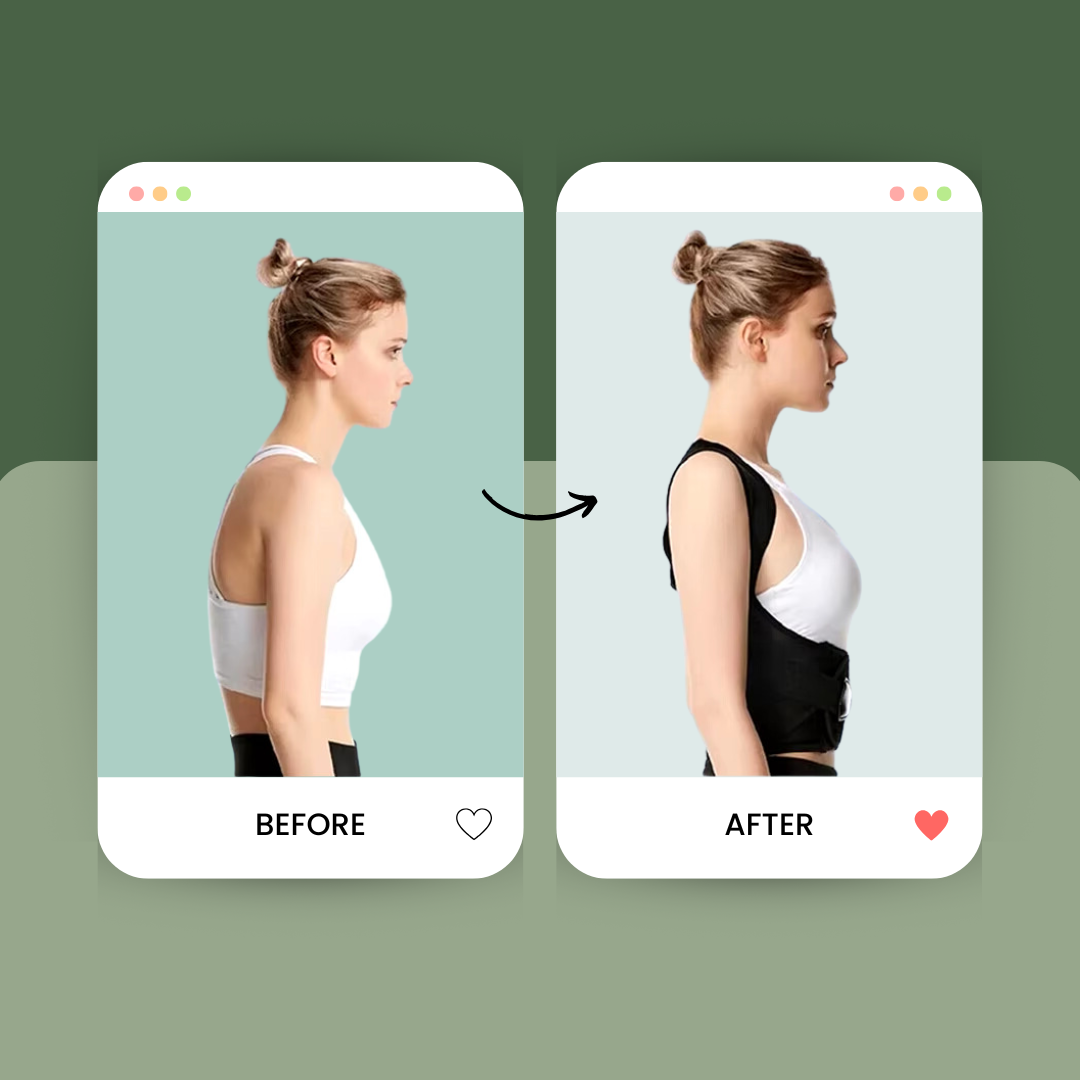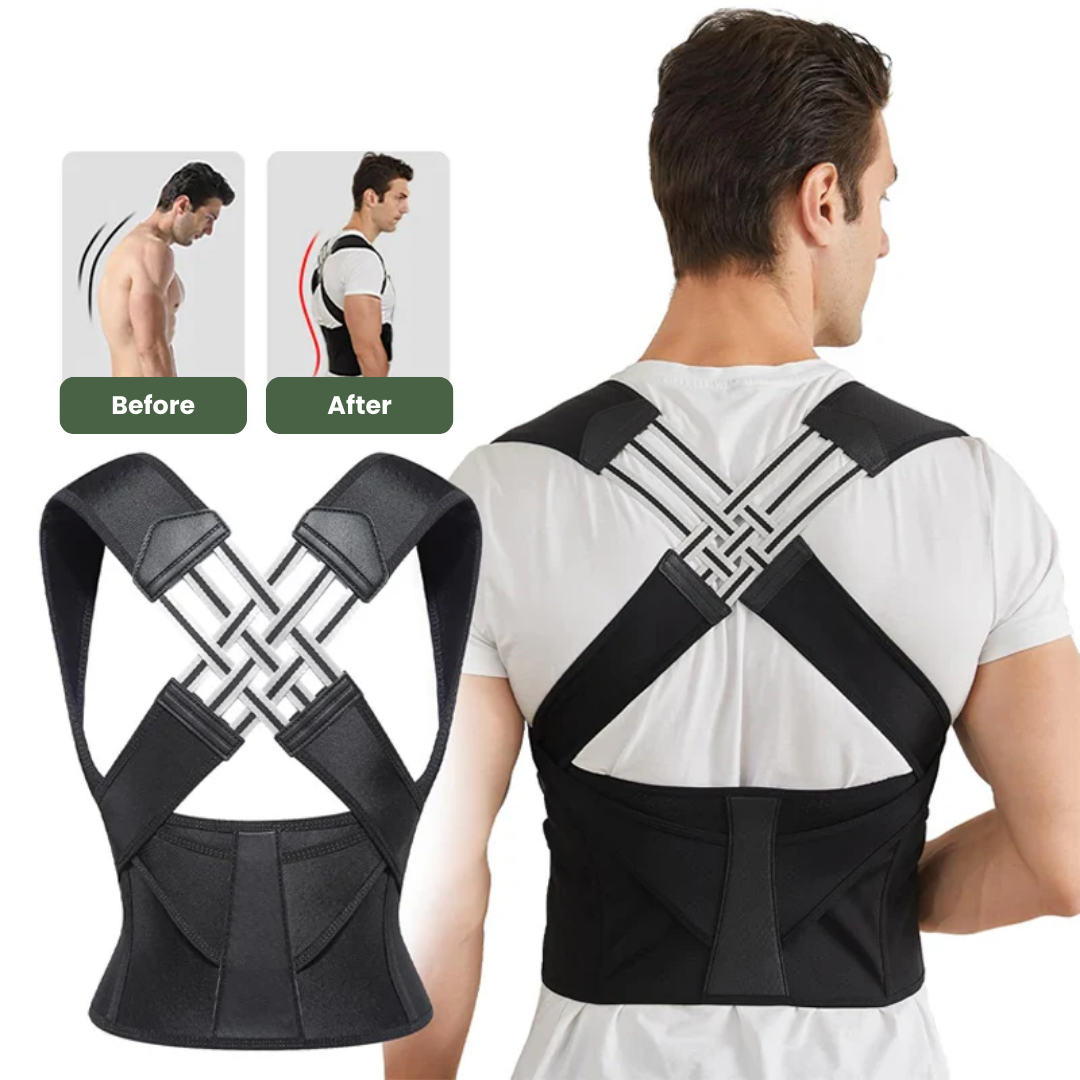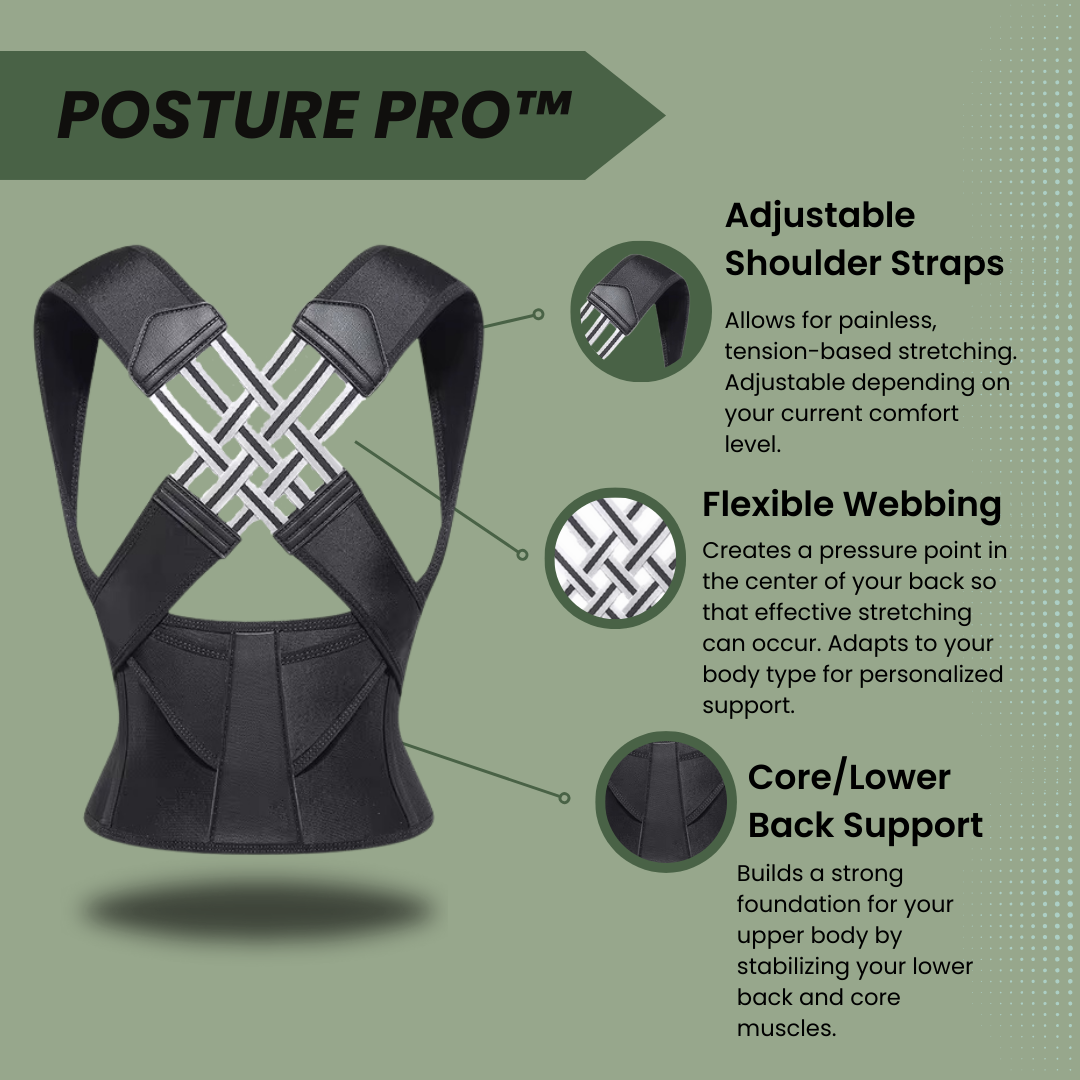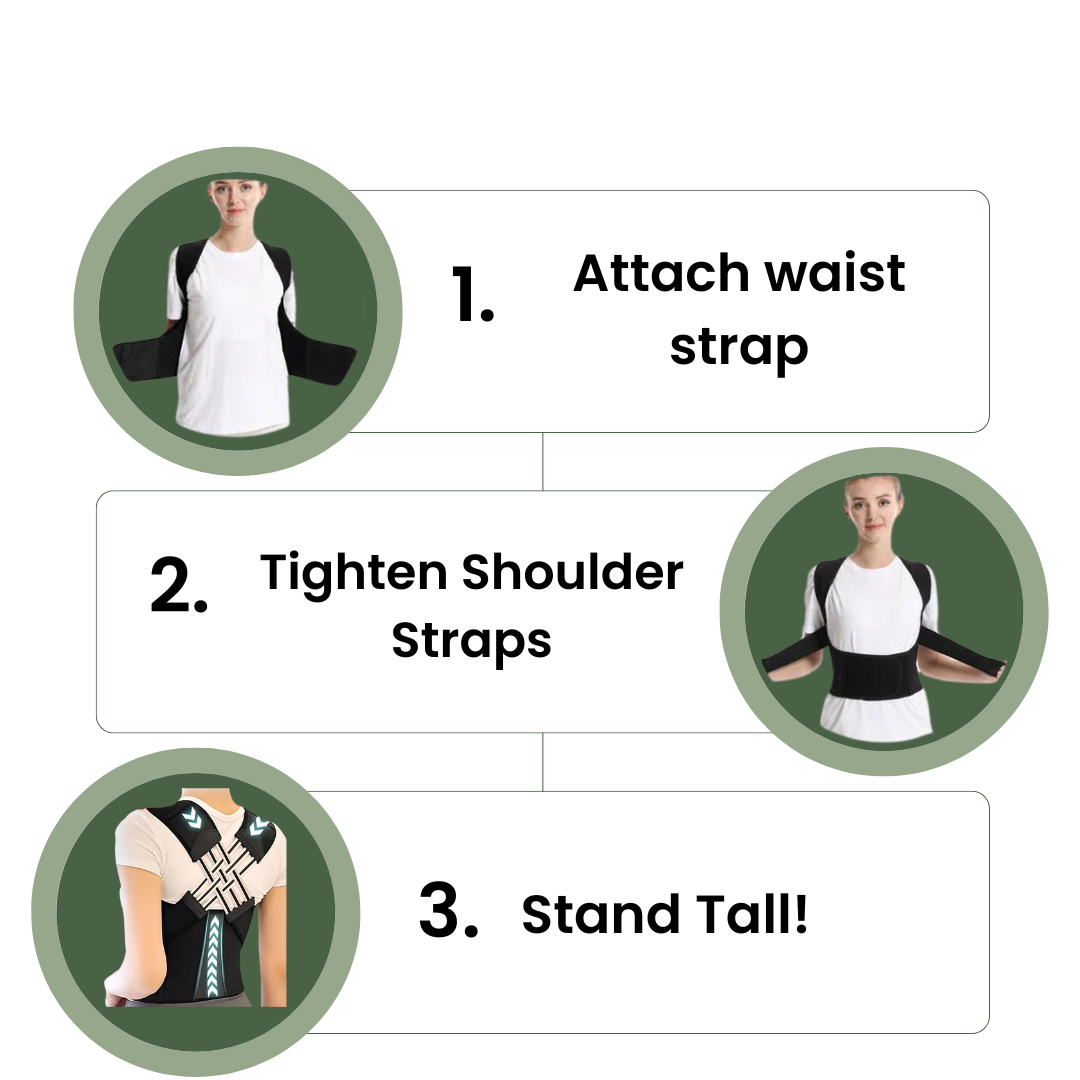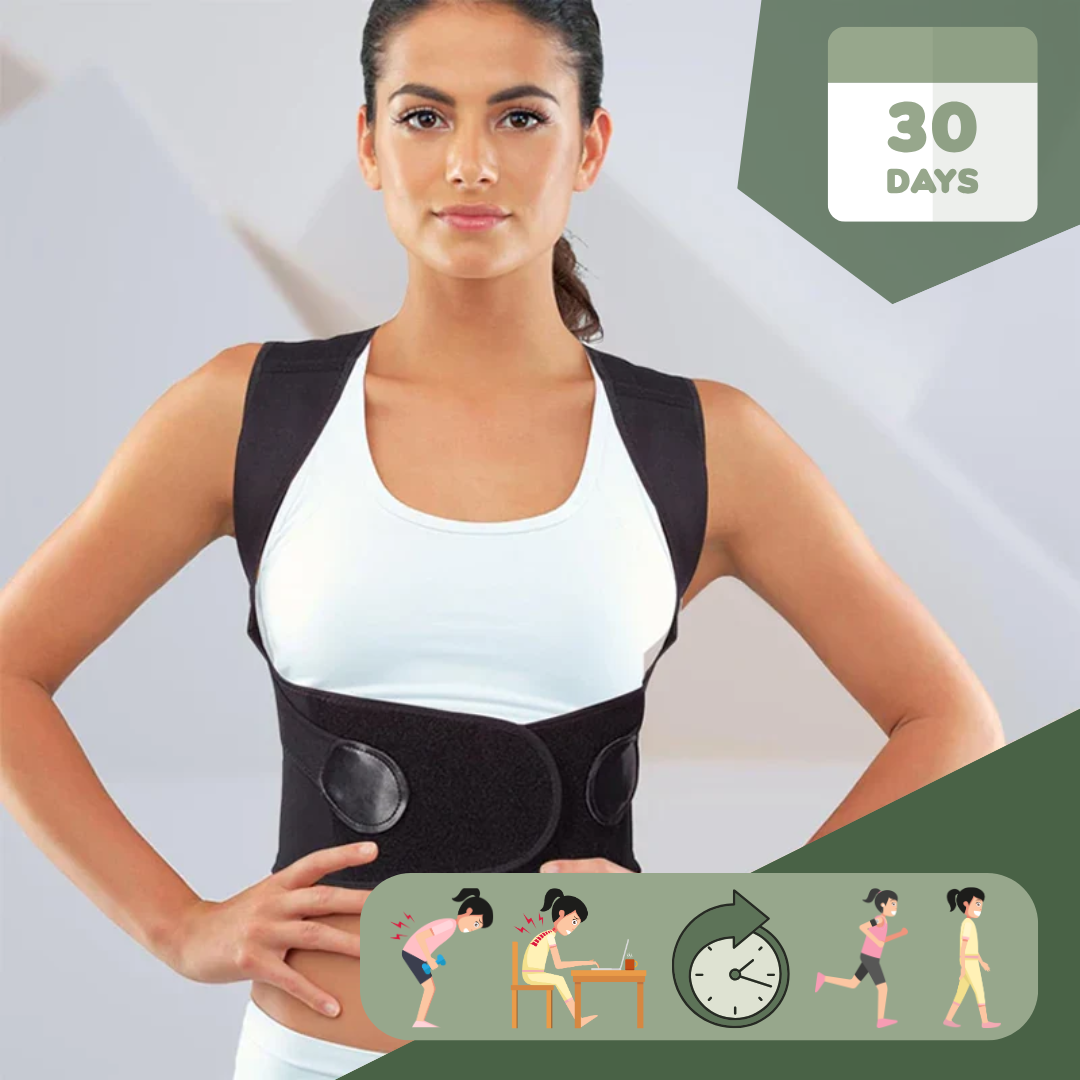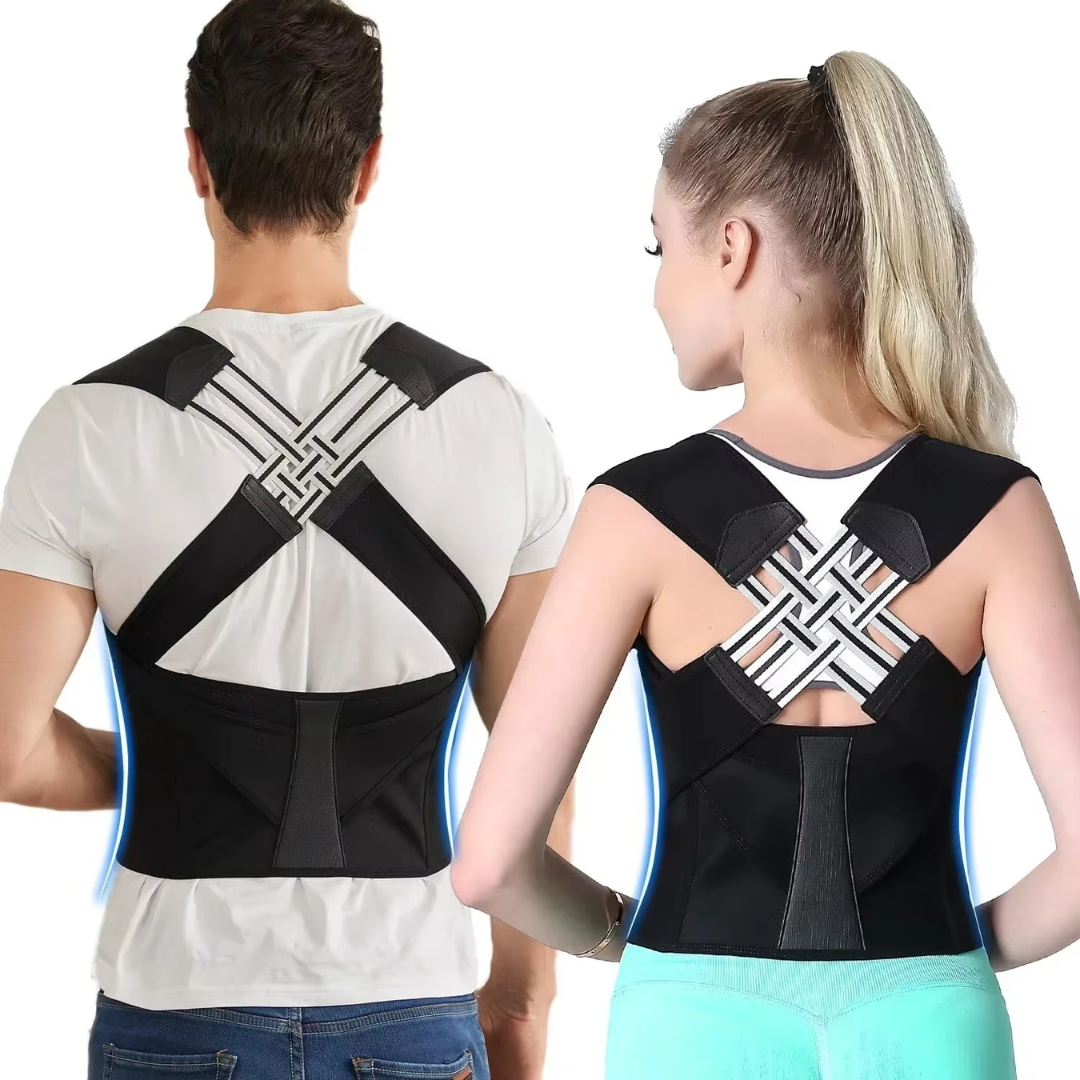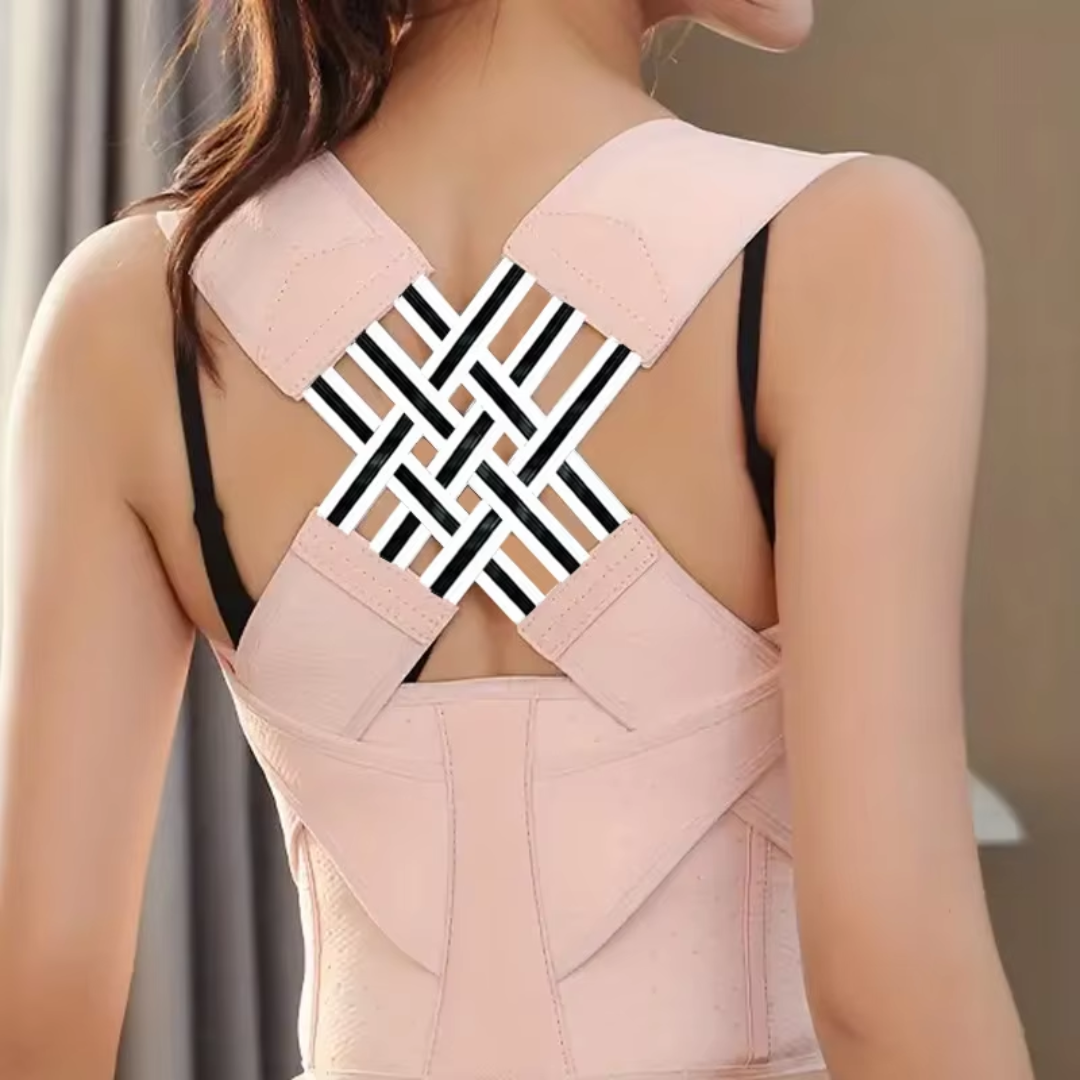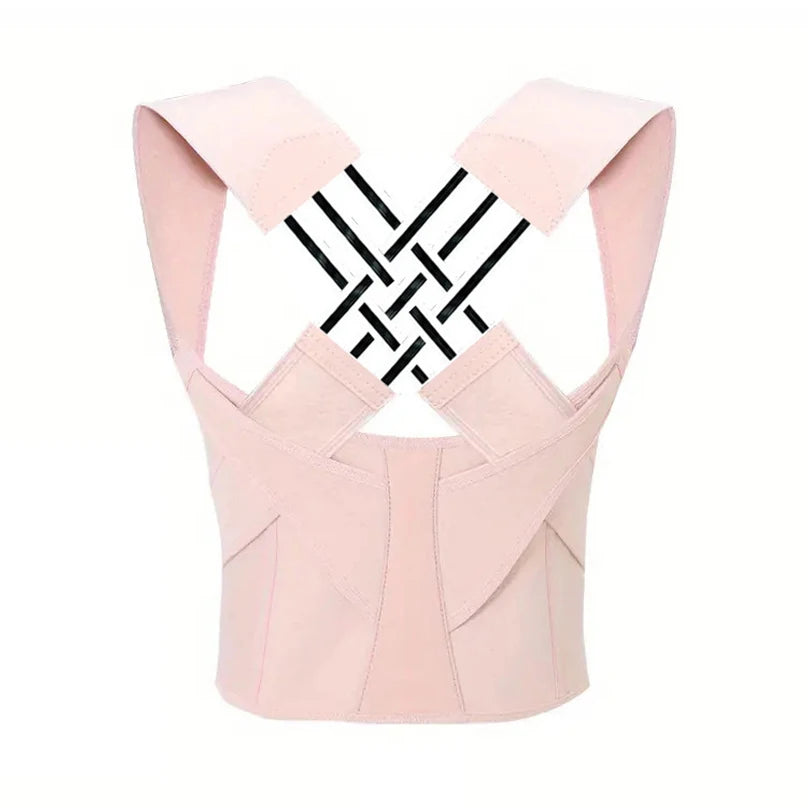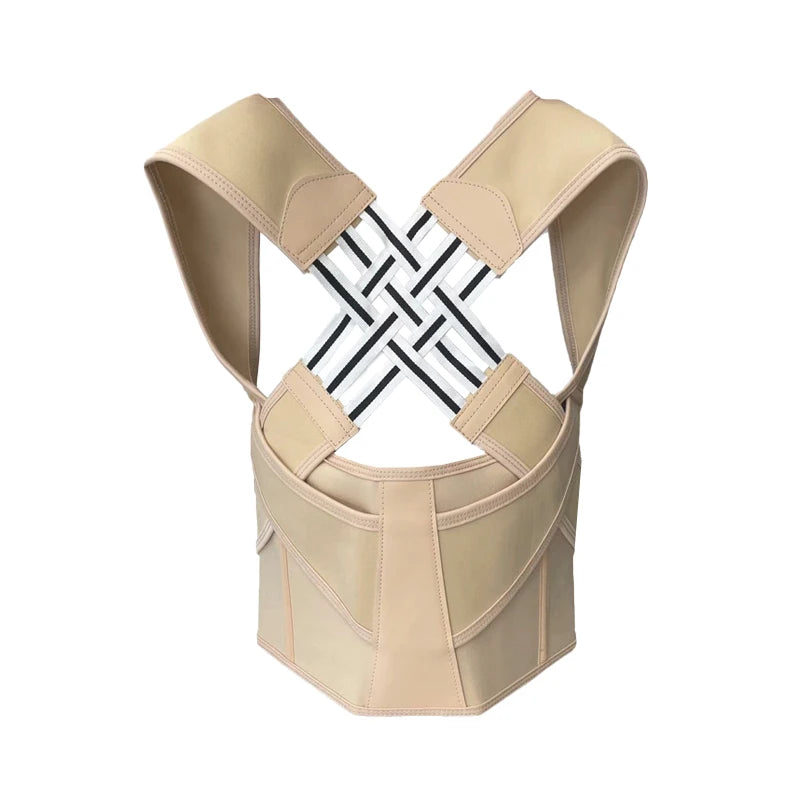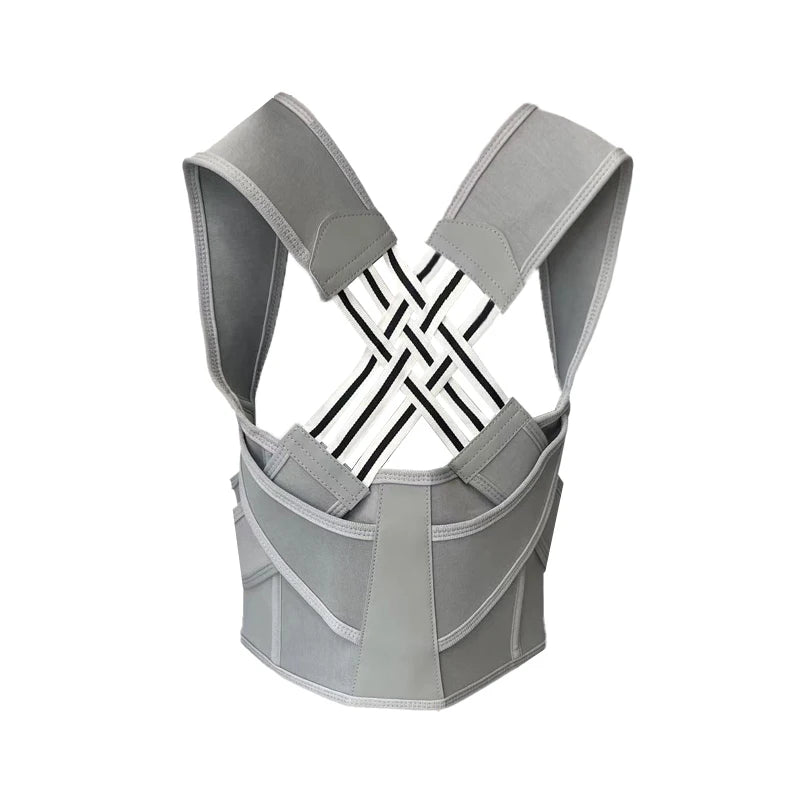Many people sit at desks all day and get back pain. Research shows spending too much on neck and lower back issues. This article talks about how posture correctors work. Keep reading to learn more.
Key Takeaways
- Posture correctors help by making the spine and shoulders line up better. They also wake up muscles that don't work enough and teach the body to keep a good posture.
- There are many kinds of posture correctors like back braces, shirts that help your muscles, tape, and devices that vibrate to remind you to sit straight.
- Using these devices can make pain go away and let people move more easily. They also make someone look better and feel more sure of themselves.
- It's important to use posture correctors right. Start with them for short times, do exercises for good posture too, and set up your workspace so it helps you stay in a good position.
- Not all tech gadgets for posture are perfect. Some might not be as helpful as they say or could cause other problems if used too much.
What Is a Posture Corrector?
A posture corrector is a tool that helps people stand, sit, and walk straighter. It works by holding the back and shoulders in a better position. This helps fight problems like neck pain and rounded shoulders from sitting too much or using phones and computers a lot.
There are different kinds of these tools, including wearable harnesses and gadgets that beep or vibrate when you slouch.
Posture correctors retrain your body for better alignment over time.
These devices are not just for looks. They help with serious issues caused by bad posture such as lower back pain, muscle imbalances, and tension headaches. Using them can make you look taller, feel more confident, and move easier without pain.
How Do Posture Correctors Work?
Posture correctors function by aligning the spine and shoulders, engaging postural muscles, and training the body to maintain improved posture. These encompass back braces, posture-supporting shirts, kinesiology tape, and tech-enabled aligners.
Aligning the spine and shoulders
Correct posture means your spine and shoulders are in line. Posture correctors work by pulling your shoulders back. This helps align the spine the right way. Wearing a posture corrector feels like someone is gently guiding your body into place.
The goal is to reduce pain from bad posture. These devices also aim to fix rounded shoulders and neck pain. They push against the lower back and pull on the shoulder area. This makes you stand or sit straighter with less effort.
Most people who sit a lot get muscle imbalances. Their chest muscles become tight, and their back muscles weak. A good back brace supports these areas so they can heal and get stronger.
When using these tools, it's like training wheels for your body. They teach you how to hold yourself properly without thinking about it too much.
Activating and supporting postural muscles
Posture correctors work by waking up the muscles that are not used enough. They point these muscles in the right direction. This action fixes muscle imbalances caused by bad posture habits.
It makes sure your spine and shoulders stay where they should.
Correctors help guide underworked muscles, creating balance.
These helpers also make you know when your posture is off. They increase your awareness of how you sit, stand, and move every day. You wear them for a few hours to learn what good posture feels like without depending on them too much.
Building muscle memory for better posture
Posture correctors can aid in developing muscle memory to maintain a straight position by promoting muscle adaptationand strengthening the postural muscles. Regular use of these correctors promotes muscle lengthening, leading to enhanced posture over time.
It is recommended to wear them for approximately 30 minutes daily to avoid excessive reliance and potential muscle weakness from prolonged use.
Chiropractic care provides personalized suggestions for effective posture correction and spinal health, offering guidance on integrating posture correctors into an all-encompassing plan for better posture.
This approach fosters the body's natural ability to uphold good alignment without solely depending on external aids, encouraging long-term postural enhancements.
Types of Posture Correctors
Back braces, posture-correcting shirts, kinesiology tape, and tech-enabled posture correctors come in various styles and designs, each catering to specific needs. Explore more about these varied options for improving your posture.
Back braces
Back braces are a common type of posture corrector. They provide support to the lower back and help align the spine. These braces are often used by people who need lumbar support or suffer from chronic lower back pain.
They work by assisting in maintaining the spine's alignment and relieving pressure on the back muscles, which can aid in improving posture.
The use of back braces is widespread in medical settings. Physical therapists often recommend them for individuals suffering from musculoskeletal pain, especially in their backs and shoulders.
Moreover, some office chairs come equipped with built-in lumbar supports that function similarly to these types of posture correctors.
Posture-correcting shirts
Posture-correcting shirts use special panels to activate and support postural muscles. These shirts provide controlled resistance to help train the body for better posture through sensory feedback.
Athletes, including Byron Hansen of the New York Giants, endorse these shirts for combating the effects of prolonged sitting and maintaining good posture.
The posture-correcting shirt acts as a reminder to sustain proper alignment rather than being a complete solution on its own. Its design specifically focuses on aligning the spine and shoulders while reinforcing muscle memory for sustained improvement in posture over time.
Kinesiology tape
Kinesiology tape, also known as KT, is an elastic type of tape that provides support without limiting movement. Research shows that the use of KT may lead to a reduction in pain and neck disability while improving posture.
When applying KT, two long I-strips are cut and anchored over the upper trapezius without tension. This aids in providing additional support for proper spine alignment and muscle activation.
KT has been found to be effective in various applications including reducing pain levels, enhancing mobility, and promoting better posture awareness. It's important to note that kinesiology tape can be used alongside other posture correctors such as back braces and tech-enabled devices for a comprehensive approach to improving posture.
Tech-enabled posture correctors
Tech-enabled posture correctors use electronic devices that provide feedback, often through vibrations, to help with posture correction. Research suggests that tech-enabled posture-correcting shirts may change posture and reduce discomfort, but the studies have significant flaws.
Over-reliance on tech-enabled posture correctors might lead to muscle weakness and potentially worsen back pain.
Benefits of Using Posture Correctors

Using posture correctors can alleviate pain and discomfort, allowing for enhanced mobility and energy. Improving appearance and confidence are additional benefits that come from using them effectively.
Combining posture correctors with exercises and practicing proper ergonomics during daily activities contributes to better results.
Pain relief and reduced discomfort
Posture correctors are designed to provide pain relief and reduce discomfort by aligning the spine and shoulders, which in turn decreases strain on these areas. These devices activate and support postural muscles, aiding muscle memory for improved posture over time.
Studies have shown that using posture correctors can lead to significant reductions in pain levels in the shoulders, middle back, lower back, neck, and pelvic region after an 8-week exercise program.
It's been found that poor posture can contribute to increased physical pain and disability; thus, correcting it can have a positive impact on reducing strain on the spine.
By encouraging proper alignment of the body through the use of posture correctors like back braces or tech-enabled devices, individuals can experience decreased discomfort and better manage conditions such as rounded shoulders or musculoskeletal disorders.
Moreover, building muscle memory for better posture may also alleviate symptoms such as tension headaches or lumbar lordosis while enhancing overall mobility.
Improved appearance and confidence
Using a posture corrector can help you look and feel better. It contributes to a slimmer appearance by reducing the appearance of a pot belly. Moreover, good posture fosters confidence, positively influencing mental health and self-image.
These benefits are significant in impacting overall well-being and how one presents themselves to the world.
By aligning your spine and shoulders, using a posture corrector can improve your physical appearance while also boosting your self-assurance. This simple tool works wonders in enhancing both your outward appearance and inner confidence, making it an indispensable part of anyone's daily routine who is focused on looking and feeling their best.
Enhanced mobility and energy
Using posture correctors can enhance your mobility and energy. By aligning your spine and shoulders, these devices improve your posture, reducing pain in areas like the neck and lower back.
Moreover, they engage postural muscles, creating better muscle memory for improved posture over time. This leads to increased movement efficiency and decreased fatigue during physical activities.
With the proper use of these tools along with targeted exercises, you’ll experience a boost in overall energy levels while moving more freely.
By wearing posture correctors as recommended by experts, combined with regular exercise routines that target postural muscles, you can significantly improve your body's alignment and strength.
This will lead to reduced discomfort in daily life activities which will also contribute to an overall increase in energy levels throughout the day.
Tips for Using Posture Correctors Effectively
When using posture correctors, wear them for the recommended durations to see results. Combine correctors with posture exercises and practice proper ergonomics during daily activities.
For more insights, read on about different types of posture correctors and their benefits.
Wear them for recommended durations
Recall: Novices should commence with using the corrector for 30 minutes. Gradually extending the duration can result in enhanced comfort and effectiveness. Avoid wearing a posture corrector while sleeping.
Strive to wear the posture corrector for about one or two hours at a time.
Combine correctors with posture exercises
Using posture correctors alongside posture exercises can significantly improve the effectiveness of both. The combination encourages muscle strengthening and memory development, reinforcing proper alignment in everyday movements.
This approach has been endorsed by physical therapists, who emphasize that a holistic regimen yields better and lasting results for individuals looking to correct their posture.
The integration of targeted exercises ensures that the muscles are actively engaged while wearing the corrector, enhancing its impact on building core strength and addressing imbalances within the musculoskeletal system.
Alignment-based workouts like Pilates, core stabilization routines, and proprioceptive training complement the corrective support provided by these apparatuses, fostering better posture awareness and bodily control.
Practice proper ergonomics during daily activities
Maintaining good posture during daily activities is crucial for promoting comfort and preventing pain. Ergonomics plays a key role in this, ensuring that your environment supports proper body positioning.
For example, using an adjustable chair with lumbar support and positioning screens at eye level can encourage correct spine alignment and reduce strain on the neck and shoulders. Furthermore, integrating regular movement breaks during prolonged sitting sessions can help prevent muscle imbalances and stiffness often associated with sedentary behavior.
Moreover, being mindful of your posture while performing everyday tasks such as lifting objects or reaching for items can significantly reduce the risk of back or shoulder injuries.
By integrating these ergonomic principles into your routine, you are actively fostering better posture throughout your day, ultimately contributing to improved overall comfort and physical well-being.
Conclusion
In conclusion, posture correctors work by aligning the spine and shoulders, activating postural muscles, and building muscle memory. These devices come in various types like back braces, shirts with muscle-activating panels, and tech-enabled correctors.
Benefits of using them include pain relief, improved appearance, and enhanced mobility. It is essential to use them effectively by combining with posture exercises and practicing proper ergonomics during daily activities.
Overall, incorporating posture correctors into your routine can help address muscle imbalances caused by prolonged periods in unhealthy positions.
FAQs
1. What is the purpose of a posture corrector?
A posture corrector is a wearable technology designed to alleviate back, neck, and shoulder pain by promoting good posture. It works by aligning your spine and reducing muscle imbalances caused by poor posture habits.
2. How does a posture corrector work?
Posture correctors function like training wheels for your postural muscles. They gently pull back your shoulders for proper alignment and increase your awareness of rounded shoulder postures that can lead to conditions such as subacromial impingement or thoracic kyphosis.
3. Can wearing a posture corrector eliminate my back pain?
While it can provide temporary relief from symptoms like lower back pain or tension headaches due to bad sitting habits, it's not an ultimate solution for chronic musculoskeletal disorders. For more comprehensive treatment, you may need physical therapy or chiropractic care.
4. Is there any risk associated with using a posture corrector?
Yes, over-reliance on this tool without focusing on core exercises could weaken your muscles further leading to dependency issues in maintaining proper alignment naturally.
5. Are all types of Posture Correctors suitable for everyone?
Not necessarily! Different people have different body shapes & sizes; hence what works effectively might vary from person to person based on factors like human anatomy & lifestyle habits among others.
6.What other methods are effective in improving my overall body posture?
Aside from using tools such as lumbar supports, incorporating anaerobic exercise into our daily routine helps strengthen extensor muscles responsible for upright positioning while physiotherapy treatments help address sports injuries related problems affecting our natural stance.


